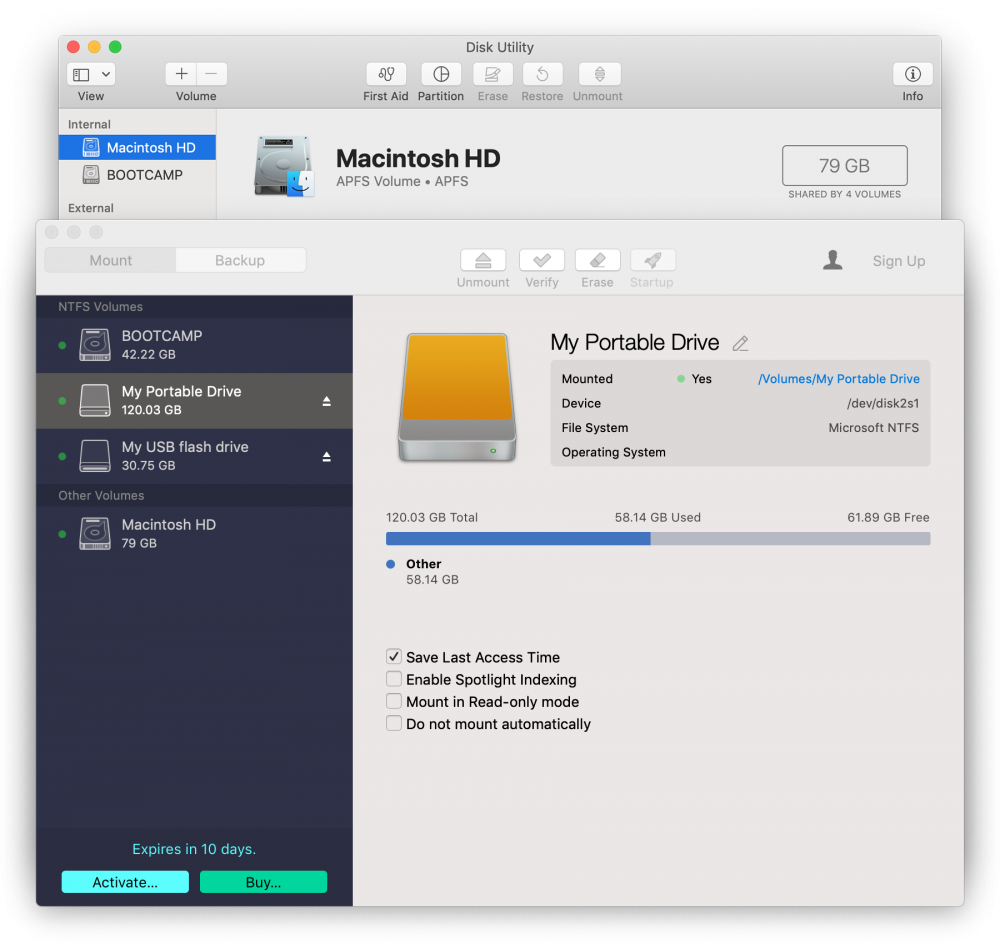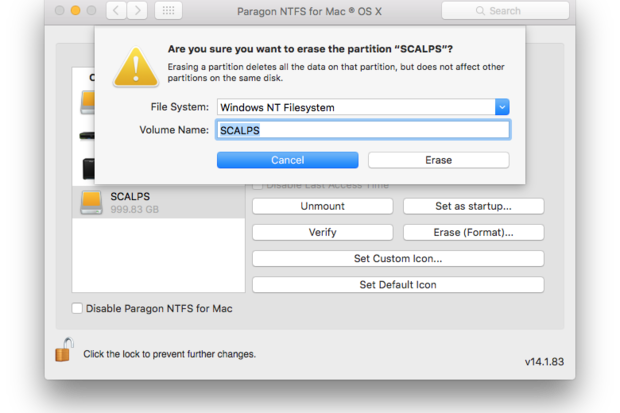

- #FORMAT NTFS ON MAC HOW TO#
- #FORMAT NTFS ON MAC MAC OS X#
- #FORMAT NTFS ON MAC INSTALL#
- #FORMAT NTFS ON MAC UPGRADE#
The process is fairly simple and only involves a couple of clicks and menu option selections, but you will need to make sure that all the data on the drive is backed up before formatting it. Format USB to FAT32/NTFS/exFAT in Windows 10 or Windows 7
#FORMAT NTFS ON MAC HOW TO#
Now that we have an overview of the basic differences between the three file systems, let's learn how to go about formatting a USB drive with one of them.

As such, if compatibility with other devices is a concern, it's a better option than NTFS. Incidentally, a larger number of hardware devices can be used with USB drives that are formatted with exFAT than with NTFS, making it a good alternative to FAT32.
#FORMAT NTFS ON MAC UPGRADE#
exFATĮxFAT, Extended File Allocation Table File System can be considered an upgrade to the conventional FAT32 format because it has higher size limits and is more lightweight. It is compatible with Mac, Windows, and Linux, but doesn't work with the majority of other hardware devices. The ideal use for these is for cloning system drives and other large chunks of data. The biggest advantage is that the partition and file size limits are extremely high, which is the major difference between FAT32 and NTFS. It offers several features that are neither found in FAT32 or exFAT, such as a change journal for recovery after errors or crashes, security using file permissions, encryption support, and more.
#FORMAT NTFS ON MAC INSTALL#
The NT File system is the default one that your hard drive is formatted with when you install Windows. NTFS is a Microsoft format that debuted with Windows NT, but it was only made available in consumer versions of Windows since Windows XP. This file system is generally recommended if you need to use the USB drive with different types of hardware because of its wide compatibility. That's a hard limit so even if you have a file like a Windows 10 ISO that's about 4.1GB, you can't store it on a USB drive that has been formatted with the FAT32 file system. However, it has one limitation in that you can't store file sizes that are larger than 4GB. It is also the most widely used file system in the world because of its compatibility with multiple devices like smart TVs and media players. FAT32įile Allocation Table 32, shortened to FAT32, was introduced with Windows 95 and is one of the oldest of the Windows file systems in use today. Let's look at each of these in detail and then get into how to format your USB drive with the appropriate file system on a Windows 10 PC. The three most popular ones for formatting a USB drive are FAT32, NTFS, and exFAT, all of which are compatible with Windows-based computers as well as other devices. Wait as the OS X utility window appears on the screen. Reboot the Mac and press Command + R keys during startup until you hear a chime.
#FORMAT NTFS ON MAC MAC OS X#
When you erase a hard drive, you basically format NTFS on Mac and change the format to a compatible one like AFPS or Mac OS X Extended (Journaled). (Mac OS Extended (Journaled) is HFS+) Step 5: Click format and your format process starts and it will permanently erase all of the data. Step 2: Choose the mounted drive on the left hand side bar.

Step 1: Open Disk Utility from application folder. Make sure that you use an easy password as you are most likely to need it soon enough. Then press the Erase button and set a password for the encrypted partition. Select the Mac OS Extended (Encrypted) format under the format list. In the Disk Utility window, specify the drive that you want to delete and click on the Erase option. This is especially important when holding big files or making bootable install disk. The only challenge with USB drives, however, is to know what file system to use when formatting them. They come in various capacity options, and easy to slip into your pocket or handbag, and they're far more durable than physical disks such as CDs, DVDs, and BDs. USB drives are extremely convenient to use for carrying data around.


 0 kommentar(er)
0 kommentar(er)
